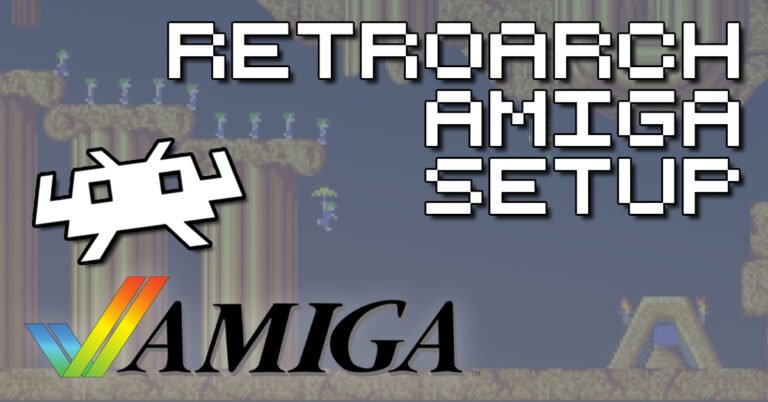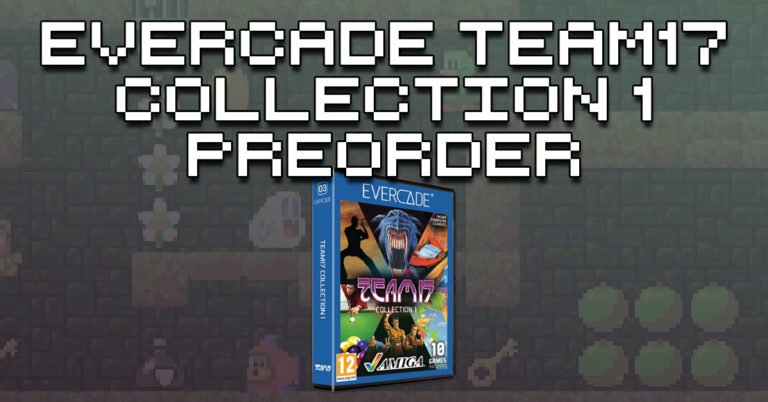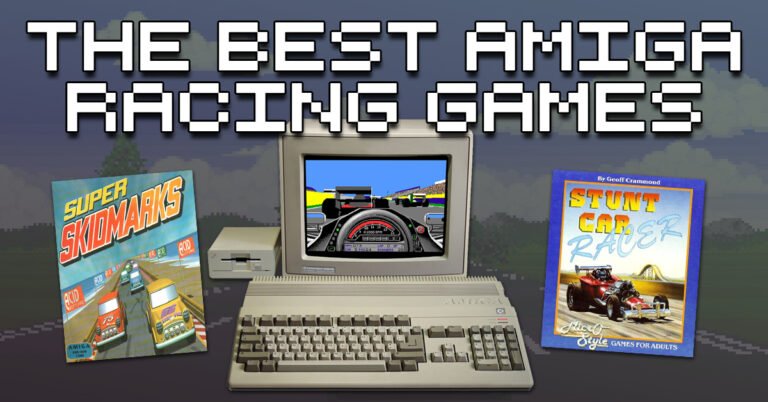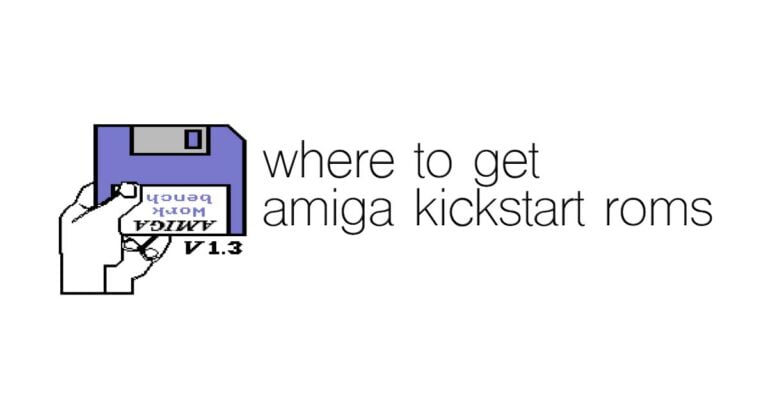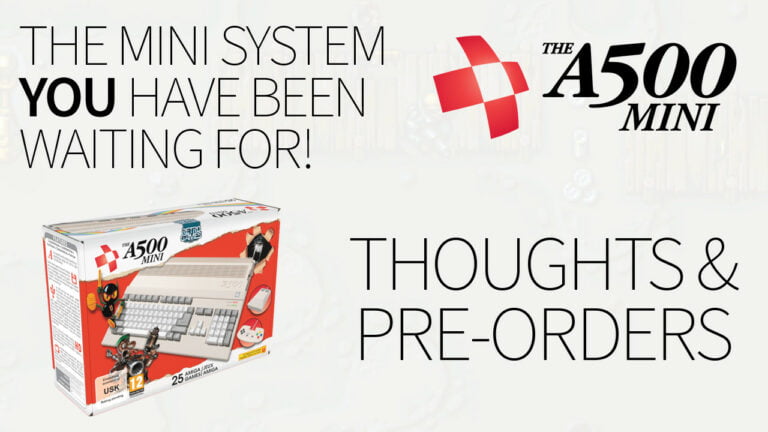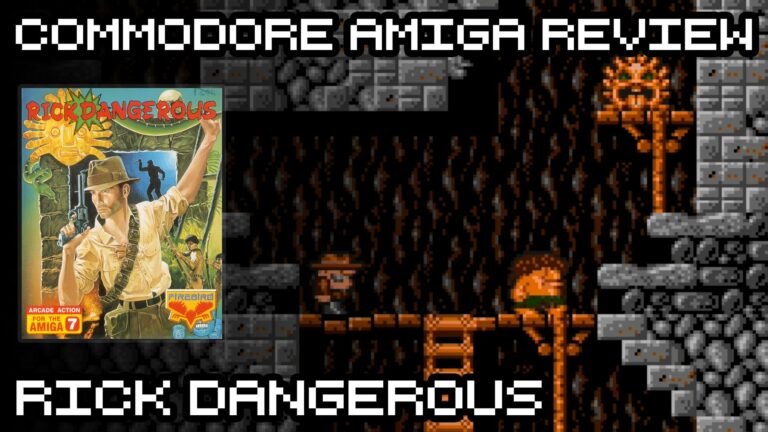Commodore Amiga
The Commodore Amiga is a range of personal and home computers released from 1985 to 1993. The Amiga is highly regarded by users of the system, as well as often recalled in many nostalgic memories.
Commodore Amiga Related Articles
Introduction to the Commodore Amiga
The Amiga ultimately failed to meet the challenge that the early and mid 90’s brought, in the form of 3D graphics that consoles and PCs of that era began to specialise in.
Through mismanagement of the product development, rather than following engineers’ desires to further innovate, any hopes of the Amiga moving with the times died along with Commodore in 1994.
1985 – 1989 | The Decade That Changed Everything
Amiga 1000 (1985)
Known at release as just ‘Amiga’, the Amiga 1000 is the first of the Amiga range of computers. Released in 1985, the Amiga 1000 was designed by Jay Miner and his team at Amiga Corporation. Notably, Commodore purchased Amiga Corporation in 1984, essentially saving the company from a dire agreement they had with Atari.
The Amiga was seen as revolutionary. It utilises the Motorola 68000 processor, a powerhouse at the time. The system has custom chips which assisted greatly with its graphical and audio capabilities. Performance surpassed anything seen at the time, with PCs still being used as business machines.
When released, the Amiga 1000 only shipped with 256kb of RAM and did not have a built-in ROM. This was required to be loaded from a floppy disk. RAM was expandable up to 8.5MB in total thanks to the external upgrade slot. The Motorola 68000 is clocked @ 7.09mhz for PAL machines and 7.16mhz for NTSC.
Video performance was best in class for a system at the price point. The Amiga 1000 offered multiple video modes and a palette of 4096 colours.
Commodore did not initially market the product that well, on account of the wide scope of its abilities. By and large, the Amiga 1000 is truly a multimedia computer and way ahead of its time.
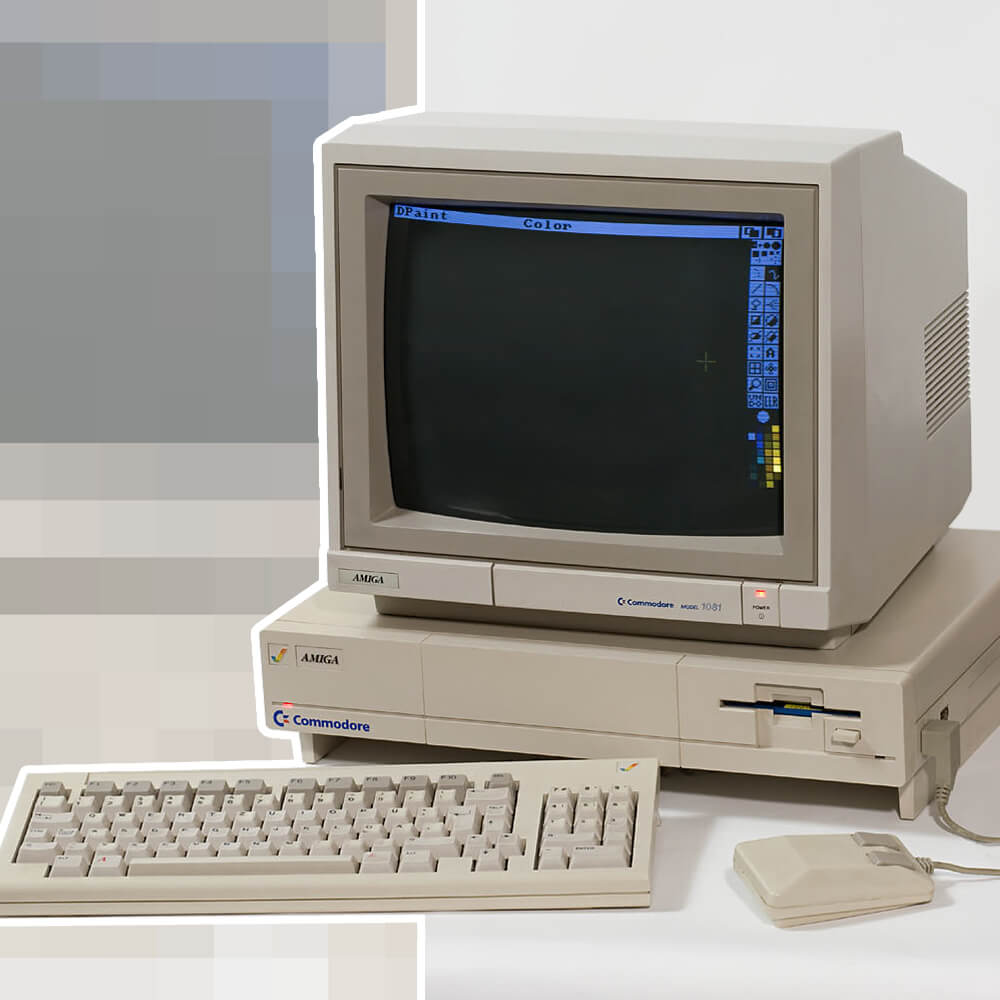
Amiga 2000 (1987)
Following the high-profile launch of the Commodore Amiga 1000, the Commodore Amiga 2000 was released in 1987. Aimed at a more high-end market, the Amiga 2000 is one of the most configurable Amiga’s available from Commodore.
The Amiga 2000 utilises the same Motorola 68000 processor as the Amiga 1000. An increased 1MB RAM as standard along with a built-in kickstart ROM were welcome additions.
Two variations of the Amiga 2000 were produced, albeit not to huge demand. The Amiga 1500 was released in the UK only. In addition to this, the Amiga 2500 was released, which is essentially an Amiga 2000 bundled with an accelerator.
A2000s utilised kickstart 1.2 or 1.3, but later revisions had the ‘Enhanced Chip Set’ (ECS) fitted with Kickstart 2.0.
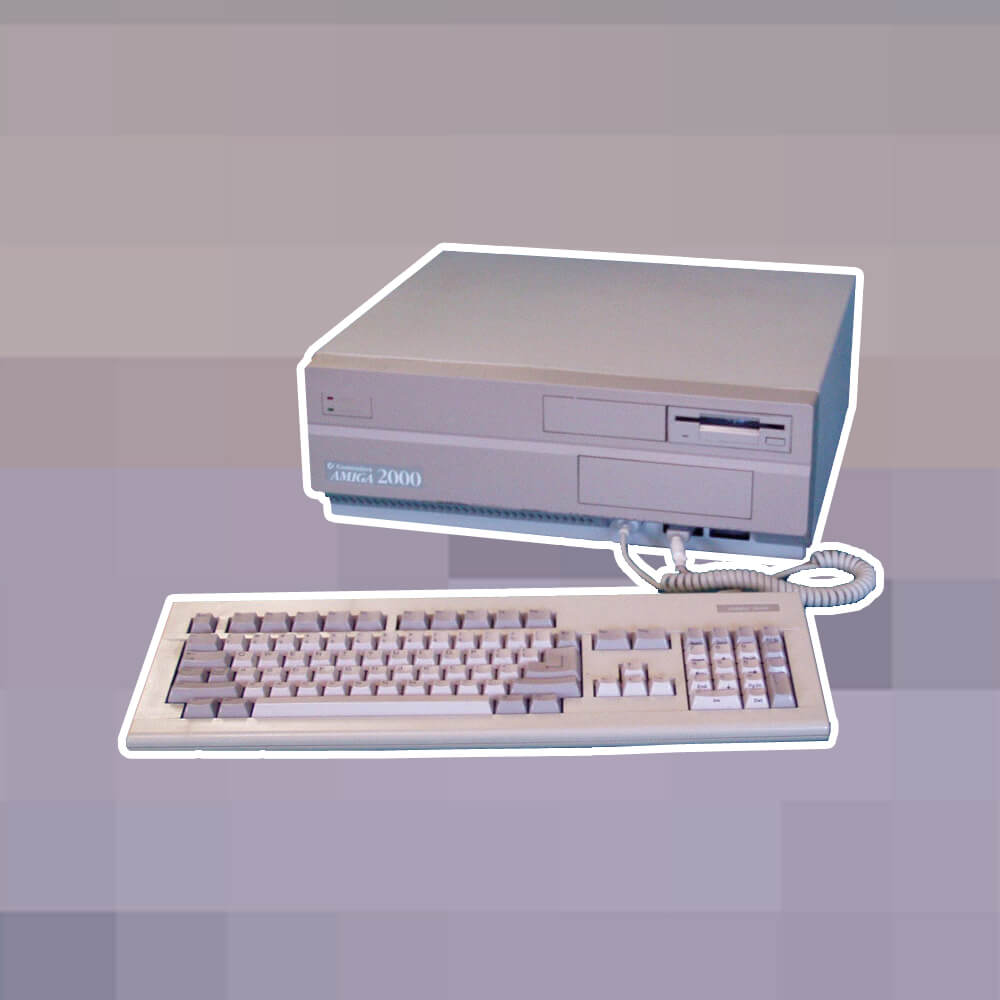
Amiga 500 (1987)
Launched as the first Amiga ‘Home Computer’ and was to compete directly with the recent Atari ST. In April 1987, the Commodore Amiga 500 was released, the month after the Amiga 2000.
The Amiga 500 is the system that really defined the Amiga as a gaming powerhouse. Far outperforming many other systems at the time, its custom chips delivered superior graphical and sound capabilities.
Shipping with a Motorola 68000 and 512kb as standard. Expanding the Amiga 500 beyond its 512kb of RAM was no problem with the trap-door expansion board. This was easily accessible underneath the A500 where the expansion card would simply slot on the board directly.
Thanks to superb marketing and negotiating efforts by David Pleasance of Commodore UK, the A500 enjoyed huge success. The 1989 Batman pack included the new Batman game by Ocean, exclusive to the Batman pack for a period of time. Although bundles had been a part of the strategy prior to this package, the Batman pack set new standards.
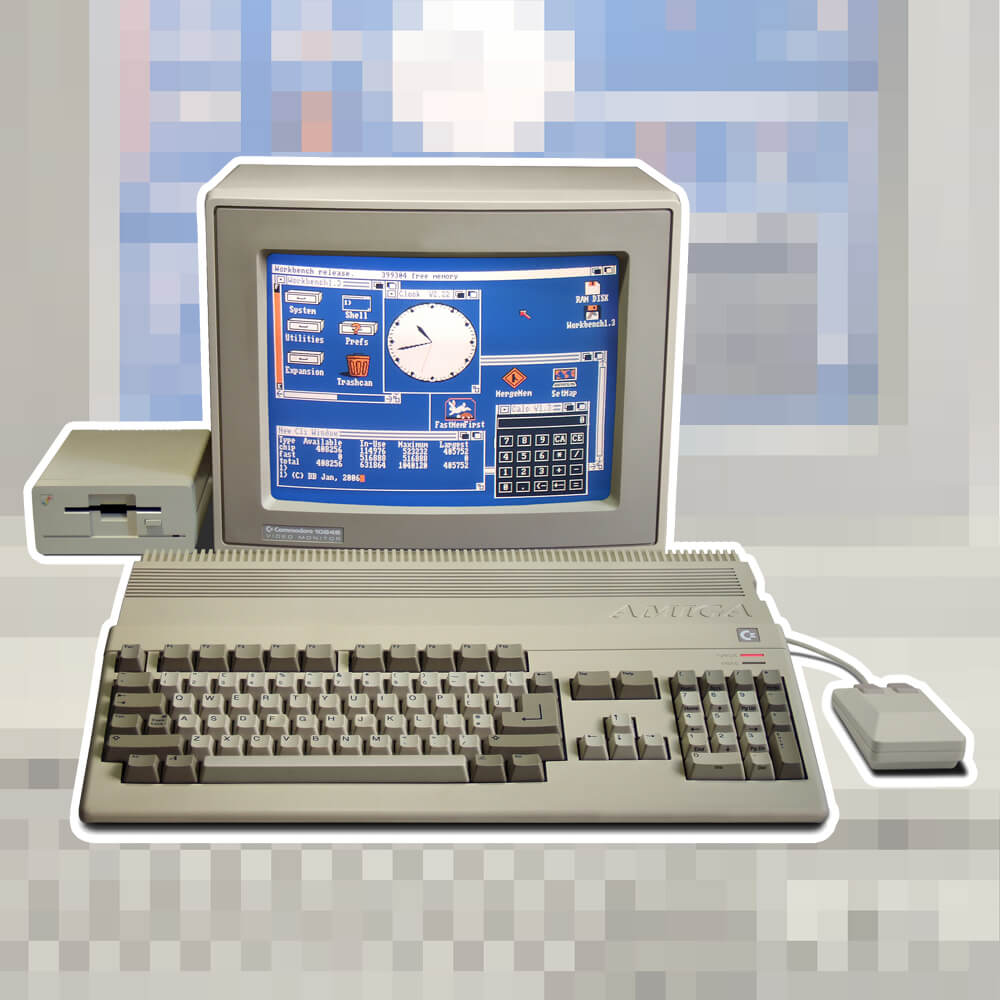
1990 – 1993 | The Decline of Commodore
Amiga 3000 (1990)
Released in 1990, the Commodore Amiga 3000 delivered the best specification seen at the time. Including a Motorola 68030, 2MB of RAM and 68882 math co-processor, it certainly was no slouch.
The system is highly expandable in the way that the Amiga 2000 also is. It also includes a number of proprietary connections for add-on peripherals. One significant addition was the inclusion of a built-in high-speed SCSI controller. This allowed multiple devices to be connected at once such as hard drives and CD-ROM drives.
Aimed at the higher-end or professional user, the Amiga 3000 remained Commodore’s key personal computer product until 1992. The A3000 was succeeded at this time by the Amiga 4000.
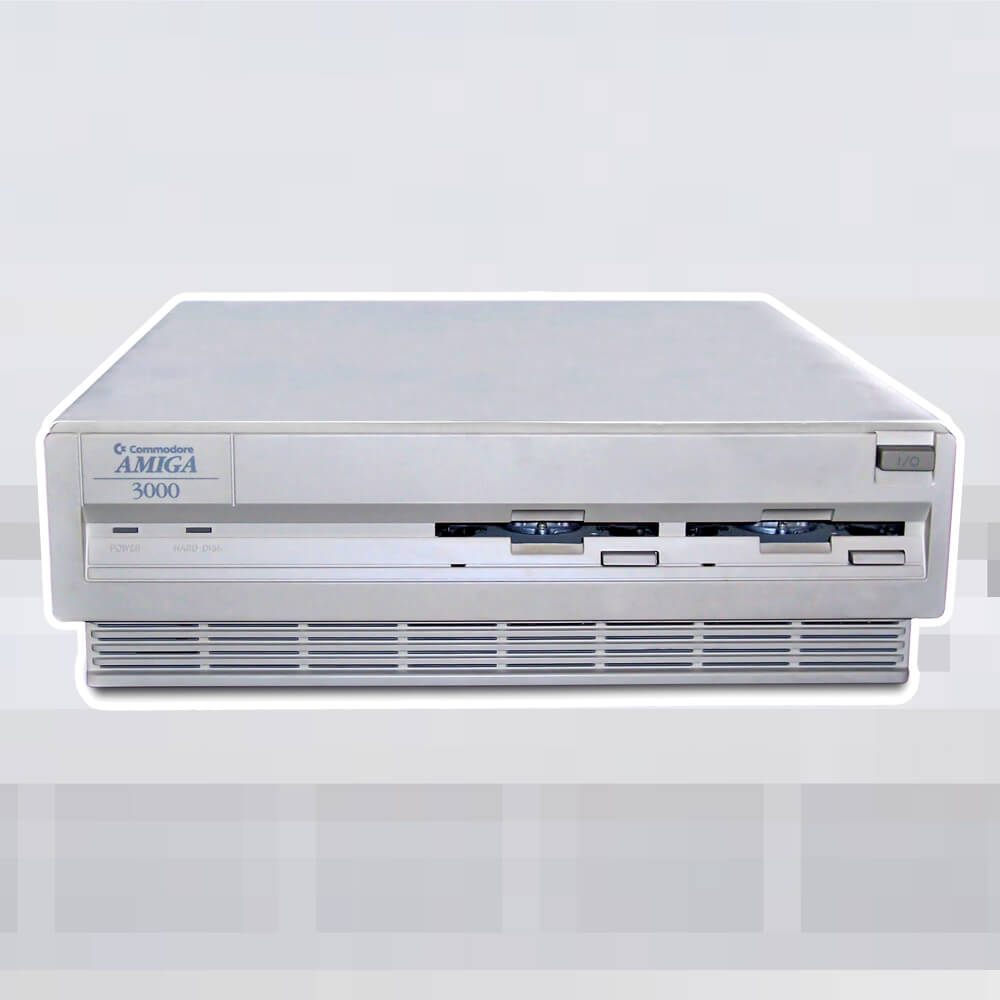
Commodore CDTV (1991)
Released in 1991, the Commodore CDTV, although not badged as an Amiga, is more or less an Amiga 500 with a CD-ROM drive included.
The CDTV is housed in a ‘separates’ Hi-Fi styled casing, which is intended to be part of your home entertainment set-up.
Considered a trailblazer now, the CDTV was way ahead of its time. Marketing the CDTV at the time was a challenge, as multimedia home computing was very much in its infancy.
Unfortunately, technology and the market were not at the point where this kind of product was to prove popular. Retailers struggled to sell the product, with many being instructed to market the product as home entertainment, rather than computing.
Technically too, the specification in terms of chipset, RAM, and processor configuration is the same as the A500. The Motorola 68000 is present as well as 1MB of RAM as standard.
Adding peripherals to the CDTV meant it can be used essentially as an A500. Joysticks, mouse, keyboard and disk drives can all be added easily.
CDTV is another example of potential from Commodore, muddled with a poor reading of the marketplace. Ultimately, it was another failed system.
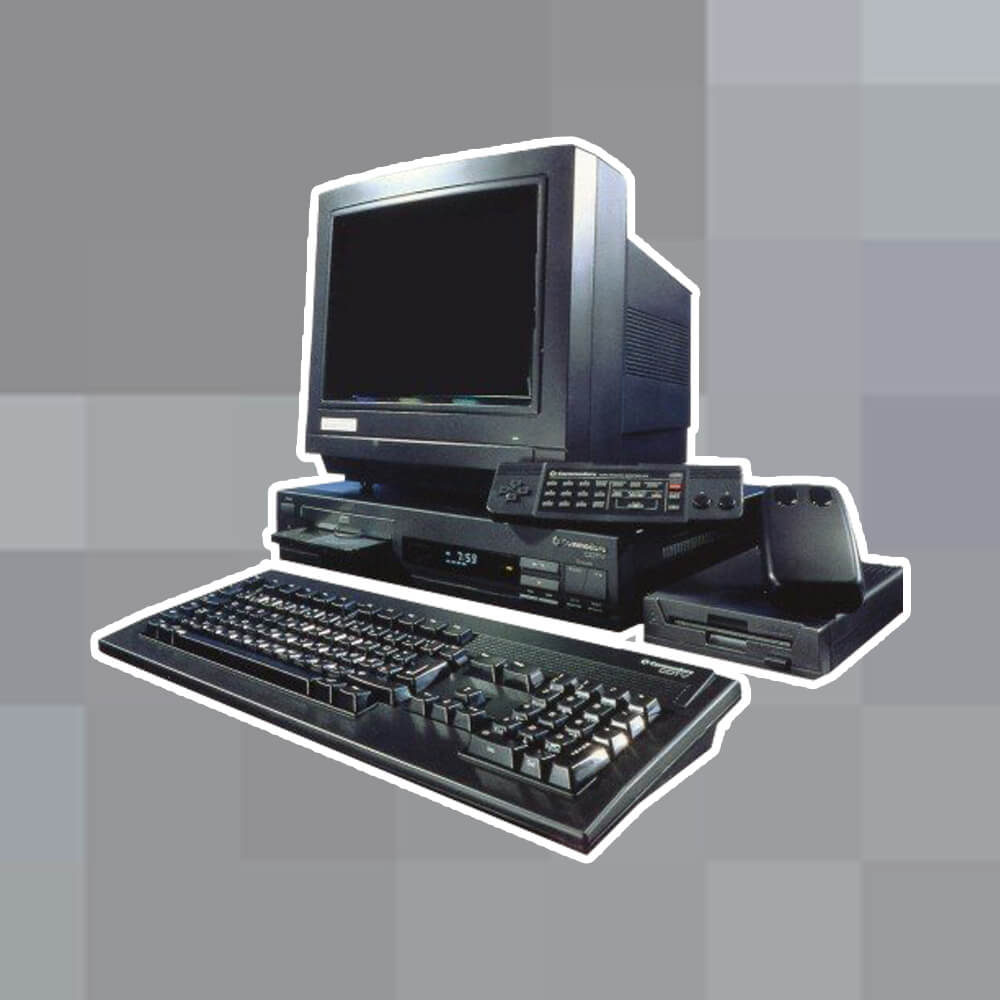
Amiga 500 Plus (1992)
The Commodore Amiga 500 Plus was launched officially in 1992 as a minor revision to the existing A500. Primarily redesigned for cost savings in production.
The Amiga 500 Plus also benefitted from these cost savings in two key areas. The first was that the Amiga 500 Plus shipped with 1MB as standard as well as the new kickstart 2.04 and Enhanced Chip Set (ECS). This did cause issues with some games that were designed for the original A500 hardware. This could be resolved by investing in a switching kickstart board so the user could switch back to 1.2/1.3. Alternatively, a cheaper method came later in the form of disk utilities such as Relokick, which provided a software solution to achieve the same thing.
Commodore by this time was on the path towards making many bad decisions. Not long after the release of the A500+, the Amiga 600 launched in March 1992 making the A500 Plus the shortest-lived Amiga. This was terrible timing since the Amiga 600 essentially replaced the now cost-reduced and more profitable A500+.
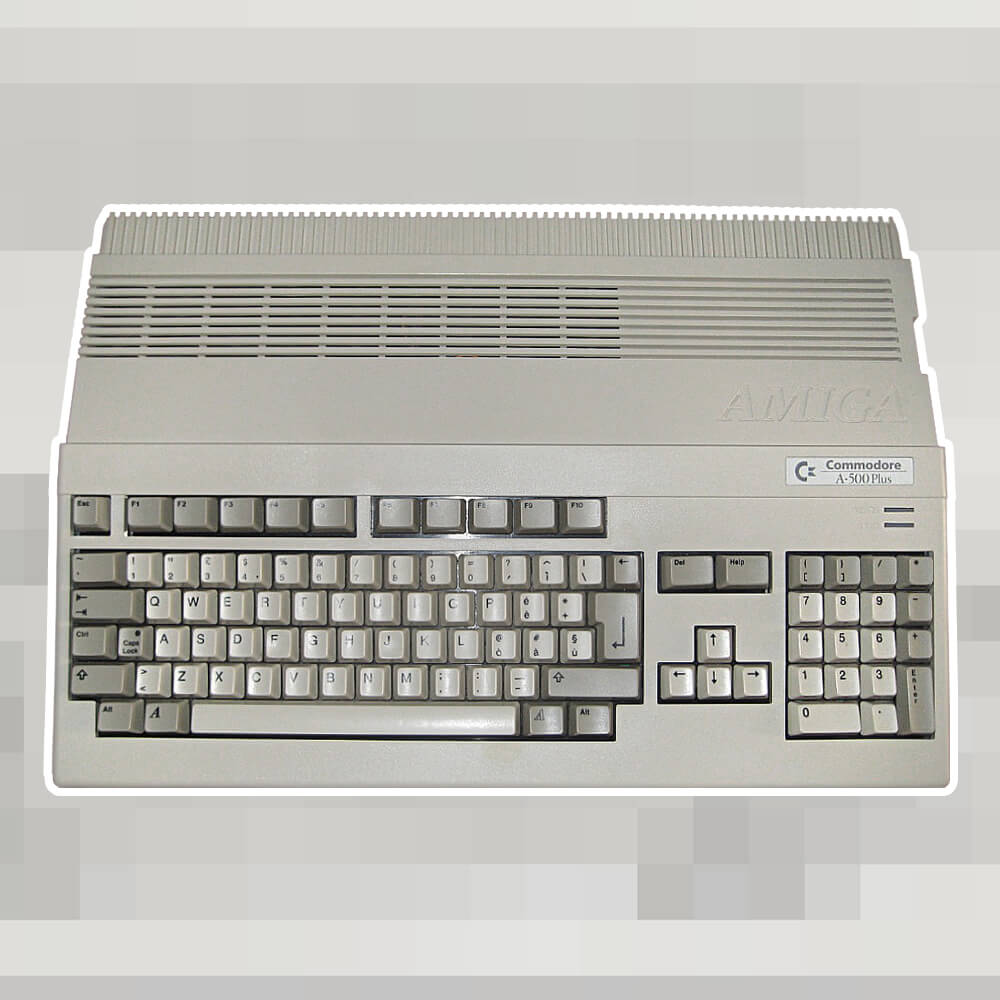
Amiga 600 (1992)
Released shortly after the Amiga 500 Plus, the Commodore Amiga 600 has always been a bit misunderstood. Intended to be launched as an affordable, entry-level Amiga called the Amiga 300.
Instead, the Amiga 600 ended up being launched as a more expensive to produce machine than the Amiga 500 Plus. This was a disaster since the specification of the A600 was virtually on par with the A500+. In average consumer terms, the A600 was just more of the same for more money!
It was not all bad for the A600. Whilst not deal breakers, the Amiga 600 benefited from the addition of a PCMCIA slot and IDE Hard Drive compatibility. This brought the system a little more up-to-date and allowed more compact peripherals to be added.
The A600 shipped with the standard Motorola 68000 processor, 1MB of RAM as well as utilising the Enhanced Chip Set.
Commodore manufactured the A600 until 1993, it was quickly succeeded by the superior Amiga 1200.
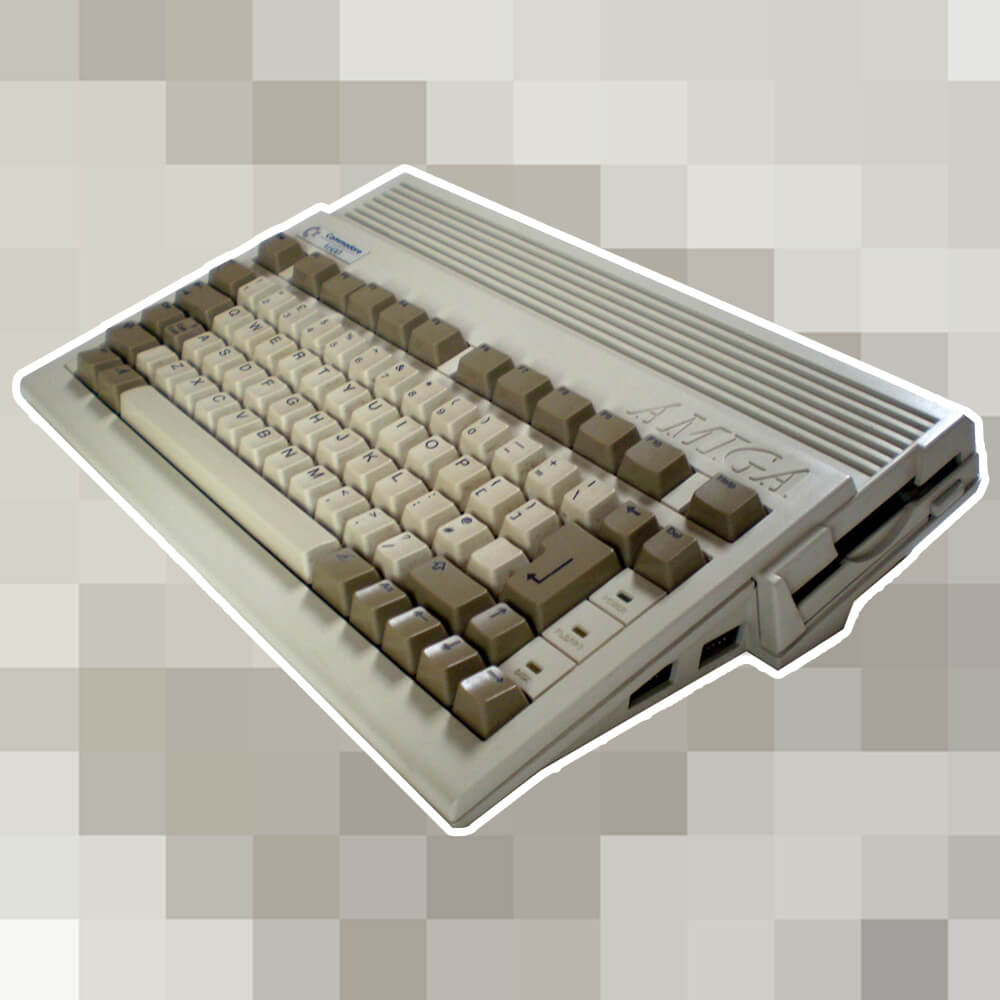
Amiga 1200 (1992)
The Commodore Amiga 1200 launched in October 1992 and signified the first decent upgrade from the previous 68000-based home computer Amiga systems.
Following the launch of the Amiga 600, the Amiga 1200 arrived with a similar smaller form factor than that of the previous Amiga 500 range. 32-bit architecture, a Motorola 68020, AGA graphics and 2MB of RAM came as standard with the A1200.
Also similar to the A600, the A1200 included options of a 2.5″ internal hard drive and a built-in PCMCIA slot to allow various expansions to be added to the machine.
Benefits of the new AGA graphics chip included the ability to display 256 colours on screen from a palette of 16.8 million (The Amiga 500, for example, could only display up to 32 from a palette of 4096). These improvements were ultimately felt to be a bit of a letdown.
With many AGA versions of games tending to be simply the same game, but with some extra colours in the backgrounds/sprites, users were not getting real value for money on the improved specification A1200.
The A1200 was to be Commodore’s last base model home computer before their collapse in 1994, with only the Amiga CD32 console being released as an affordable Amiga computer.
Check out some of the best Amiga 1200 games.
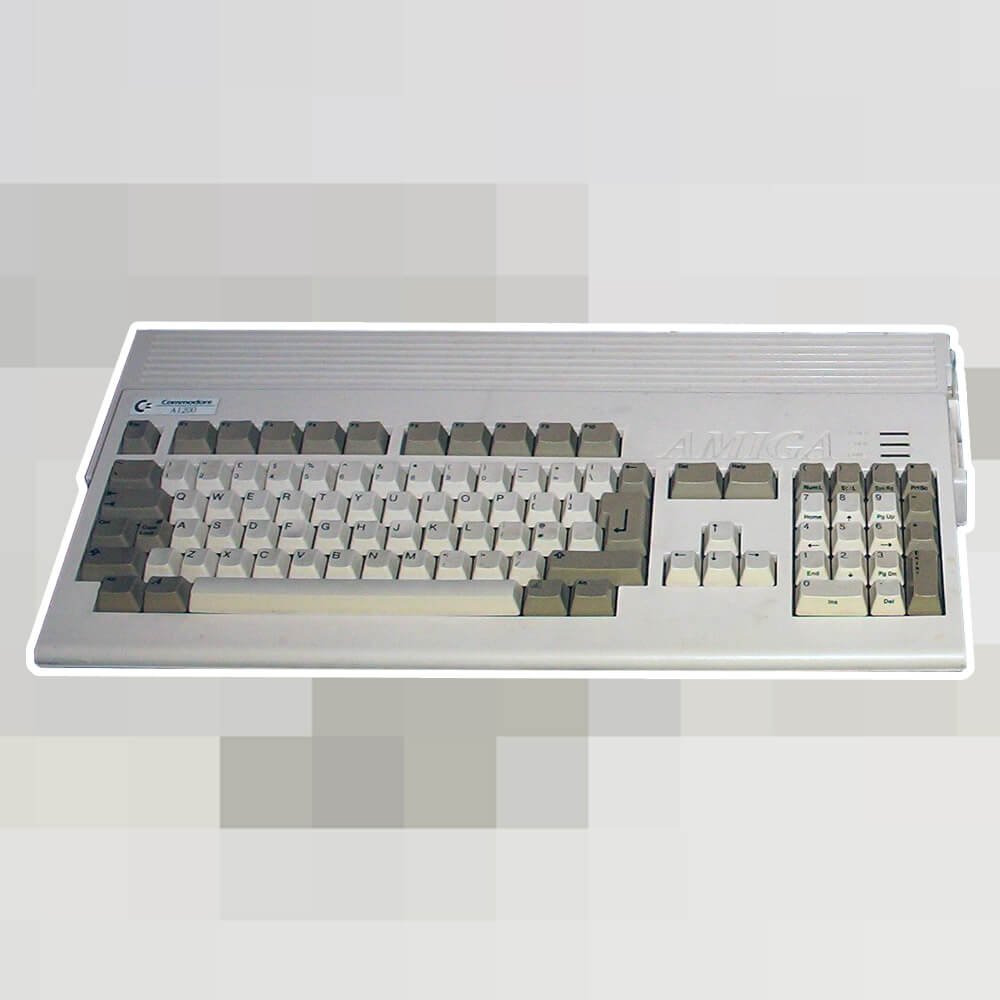
Amiga 4000 (1992)
The Commodore Amiga 4000 is the final Amiga ‘personal computer’ to be released by Commodore.
Launched in 1992, the Amiga 4000 came in two versions. The first released Amiga 4000 included the Motorola 68040 processor and 2MB chip RAM, the second A4000 arrived the following year. The A4000/030 utilised the Motorola 68030 CPU. Both utilised the latest kickstarts 3.0/3.1 respectively.
The biggest addition to the A4000 over the Amiga 3000 is the Advanced Graphics Architecture (AGA) chipset. This delivered more capable graphical abilities in terms of available palette, on-screen colours and sprite capacity.
Like the other Amiga personal computers, it is a very expandable machine with multiple slots accommodating a range of peripherals. The system was again aimed at high-end users and professionals.
This was the last high-end Amiga personal computer, the final Amiga branded machine arrived in 1993 in the form of the CD32.
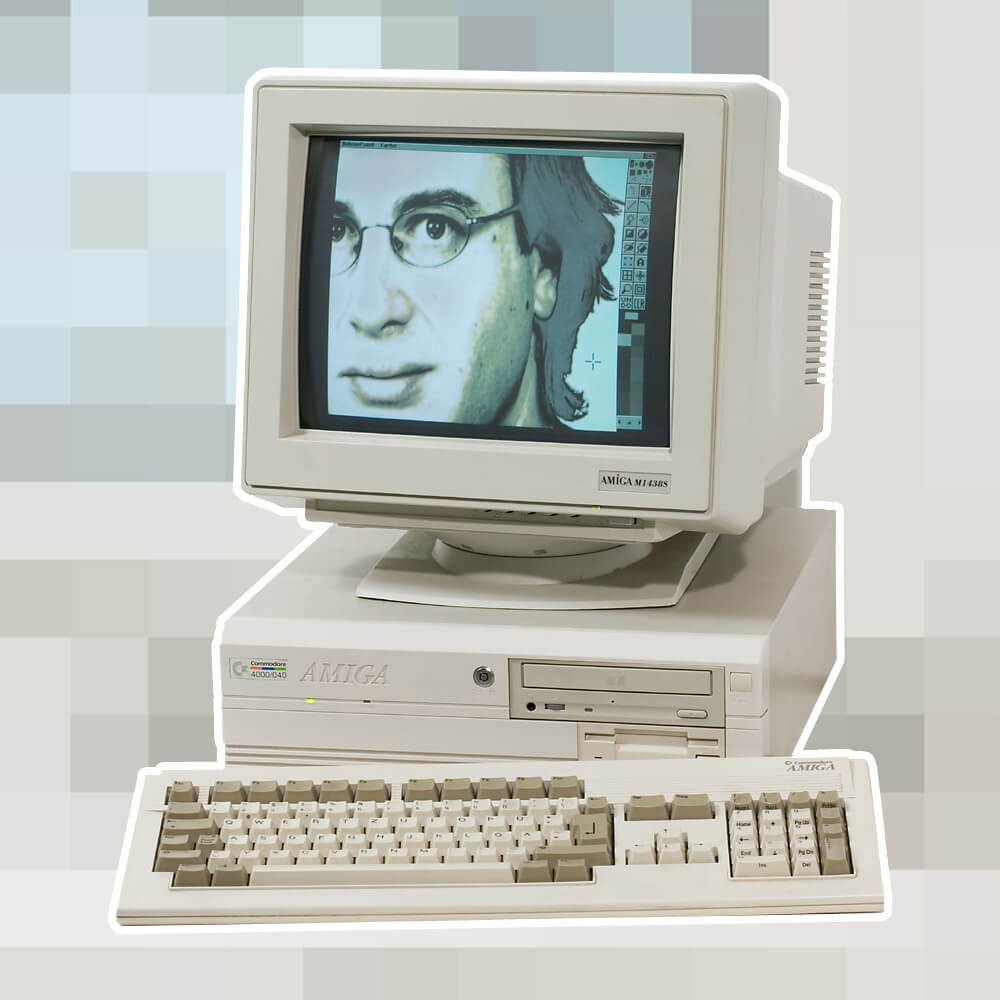
Amiga CD32 (1993)
The Commodore Amiga CD32 was Commodore’s attempt at consolidating the Amiga into a dedicated CD-based gaming console. Released in 1993, the Amiga CD32 was to be Commodore’s final system. Here, we take a look at the system itself, the best Amiga CD32 games, CD32 emulators and where to find the Amiga CD32 for sale.
Based on an Amiga 1200, the CD32 has some minor differences in its specification. Obviously having a CD-ROM-based system as well as a console form factor with no integrated keyboard. The system itself utilised the Motorola 68020 CPU, 2MB of RAM and the AGA chipset, mirroring the Amiga 1200.
The key difference between the CD32 and the Amiga 1200 on the motherboard is the Akiko chip. The Akiko acts as the CD-Rom controller and facilitated graphics performance. Unfortunately, virtually no CD32 games utilised the chip and its features.
The CD32 controller is something that divides opinion. The general consensus seems to be that the CD32 controller is of poor build quality and not that comfortable to use. The D-Pad is most criticised for its spongy, unresponsive feel, making diagonal movements very tricky to achieve. However, CD32 controller
Upon the system’s release, there were only a handful of games available with many more promised by the end of the year. Unfortunately, many did not make a release.
By this time people were used to Commodore making questionable marketing and product decisions. The system’s potential was hampered by Commodore deciding to bring its launch forward significantly. This resulted in developers not having sufficient time to fully realise its potential for game development before its launch. Inevitably this meant that most games released were just Amiga ports.
The Amiga CD32 can be expanded and essentially turned into an Amiga 1200. Much in the same way as the CDTV, users can add floppy / hard drives, mouse and keyboards to the system.
As a concept, Commodore had more right with the Amiga CD32 than with the CDTV, but the poor product and marketing decisions meant it got off to a slow start. In retrospect, the Amiga CD32 was destined to never succeed.
The following couple of years saw the likes of the Sony PlayStation released which changed the gaming landscape forever. It seems unlikely now that the system would have been able to compete.
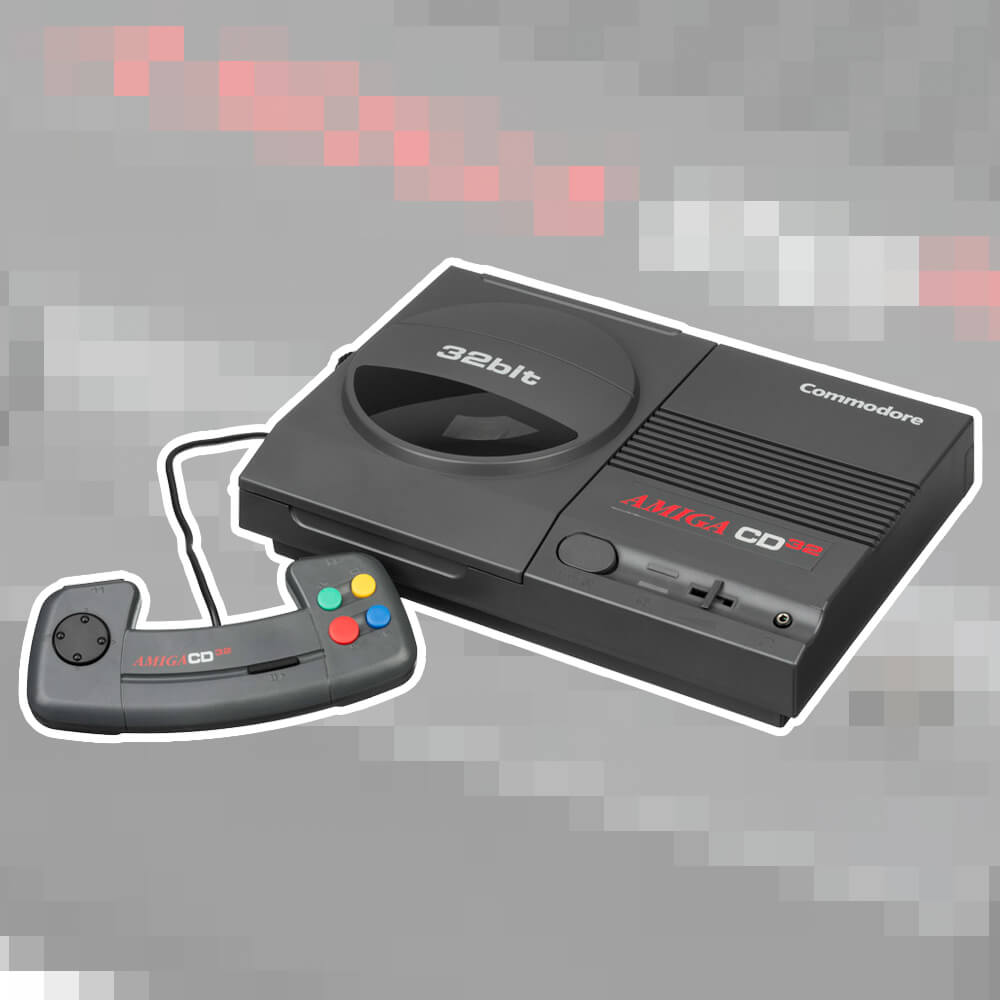
Amiga Emulation
The king of Amiga emulation has long reigned in the form of UAE. UAE provides emulation of all variances of the Commodore Amiga (including the CDTV and CD32). It allows emulation of all original stock hardware, but also of additional hardware such as hard drives and accelerator cards. It is the most complete, all-in-one Commodore Amiga – The Definitive Guide emulator you will find.
There are a few flavours of UAE available. Depending upon your platform and also skill level, you will find something that suits your needs.
Check out our article on the Best Amiga Emulators to help you make that decision.
WinUAE (Windows)
The most configurable and advanced Amiga emulator and caters wonderfully for Commodore Amiga – The Definitive Guide emulation. Recommended if you want to play around with in-depth settings and recreate your old Amiga set up more accurately. Check out WinUAE here.

A lifelong avid gamer and computing enthusiast, Matt has decades of Retro Gaming experience. Now over 40 years old, Matt now even considers himself retro, but fortunately, nobody has developed a Matt emulator (not yet at least!).
